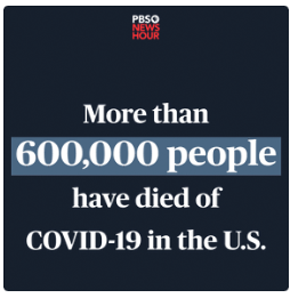Health Plan Weekly
-
News Briefs: Vermont Sues PBMs Over Formulary Exclusions
Another state attorney general, Vermont Democrat Charity Clark, has filed a lawsuit against prominent PBMs — in this case, The Cigna Group’s Evernorth and CVS Health Corp.’s Caremark. According to a July 17 press release from Clark’s office, the two PBMs “control approximately 95% of the commercial market in the state” and “as a result, they have a hand in nearly every prescription transaction and have near complete control over the pricing, dispensing, and reimbursement systems.” The press release alleges that the two PBMs “grant placement on their standard formularies to the prescription drugs with the largest payments from manufacturers and the highest list prices, while excluding lower-cost prescription drugs.” Arkansas Republican Attorney general Tim Griffin recently sued UnitedHealth Group’s Optum Rx and Evernorth over their alleged roles in the opioid epidemic. And in 2023, Ohio Attorney General Dave Yost filed a lawsuit accusing Express Scripts, Prime Therapeutics, Humana Pharmacy Solutions and Ascent Health Services of colluding to drive up drug prices.
-
Experts Challenge Specter of ‘Widespread’ ACA Enrollment Fraud
In recent letters to two federal watchdog agencies, Republican leaders of key House committees demand an investigation into “widespread” improper enrollment in Affordable Care Act exchange plans, citing the findings of a paper from Paragon Health Institute, a right-leaning think tank.
Health policy experts who spoke to AIS Health agree that that there are incentives for enrollees — and the brokers who help them find coverage — to estimate their income in such a way that they will qualify for the richest ACA subsidies. However, they aren’t convinced that there’s large-scale enrollment fraud taking place.
In their paper, the Paragon researchers estimate that 4 million to 5 million people are improperly enrolled in $0-premium (or fully subsidized) ACA exchange plans as of 2024, costing taxpayers between $15 billion and $20 billion.

-
FTC’s Reported Plan to Sue PBMs Over Rebates Raises Eyebrows
The Federal Trade Commission (FTC) on July 9 released a new report stemming from its investigation into the business practices of PBMs — and on the next day, the Wall Street Journal and other news outlets reported the antitrust agency is on the verge of filing a lawsuit against the country’s largest PBMs over their business practices related to the rebates they negotiate with drug manufacturers for products including insulin. The FTC reportedly is concerned that the lure of high rebates is causing PBMs to steer patients toward higher-cost drugs.
The FTC has not yet confirmed the WSJ report, which cited people familiar with the matter. But one expert says that the FTC needs to be careful about the way it treats rebates.

-
Researchers Call for More Managed Medicaid Coverage for SUD Treatment
Most state Medicaid programs require managed care plans to cover some common treatments and medications for substance use disorder (SUD), according to a study published this month in Health Affairs. However, Lauren A. Peterson, one of the study’s authors, tells AIS Health, a division of MMIT, it is “concerning” that only half of the states that contract with managed care plans require coverage of all treatments and services recommended by the American Society of Addiction Medicine (ASAM).
While Peterson, a Ph.D. candidate at the University of Chicago, acknowledges that “states are really making a commitment to cover [SUD treatments],” she says she and her co-authors agree with ASAM that all SUD treatments should be available.

-
MAOs — Especially CVS/Aetna — Gain With Revamped Star Ratings
CMS’s recent revision of Medicare Advantage Star Ratings made some health insurers, especially CVS Health Corp.’s Aetna, big winners in the eyes of Wall Street. A number of insurers received higher bonus payments from CMS for the 2024 plan year after the revision, and others were able to resubmit their bids for the 2025 plan year on more favorable terms.
The changes are the result of the rulings in lawsuits brought by SCAN Health Plan and Elevance Health, Inc. against CMS. In the SCAN lawsuit, the U.S. District Court for the District of Columbia found that CMS’s failure “to follow its own regulation” resulted in the not-for-profit MA insurer receiving an incorrect 2024 Star Rating, which cost the plan nearly $250 million in quality bonus payments (QBPs) for 2025. That same court also ruled separately that CMS must recalculate Elevance subsidiary Anthem Blue Cross and Blue Shield of Georgia’s Star Ratings.












